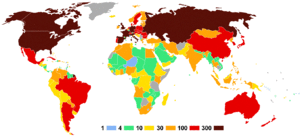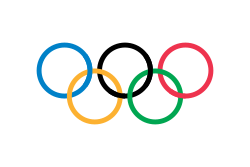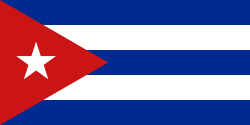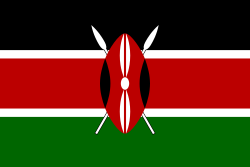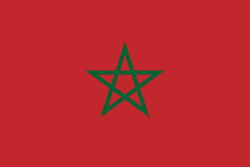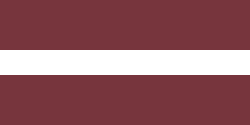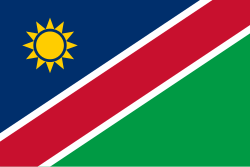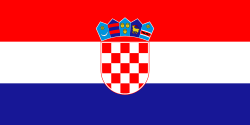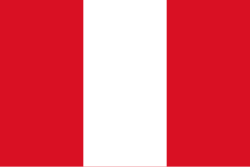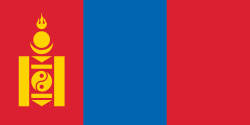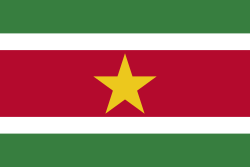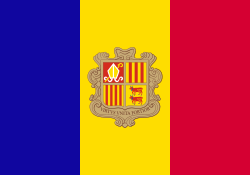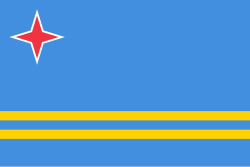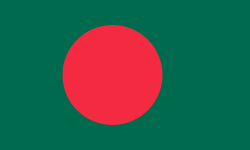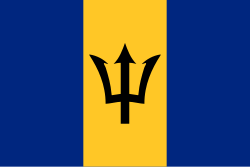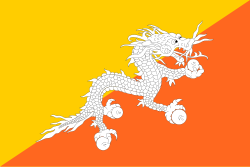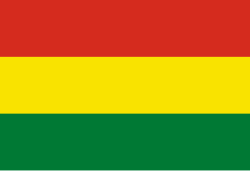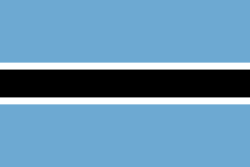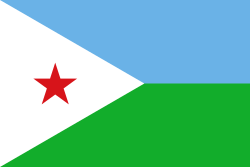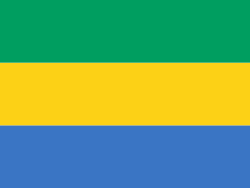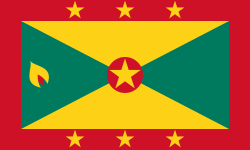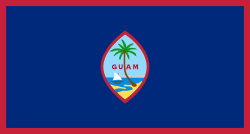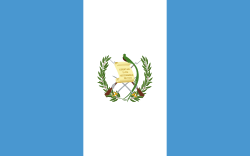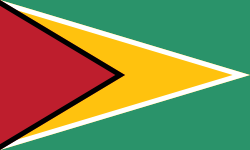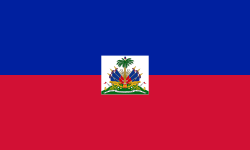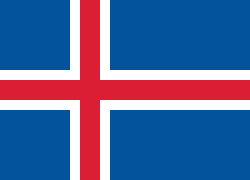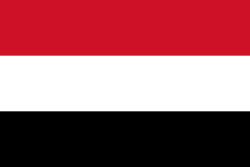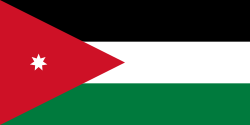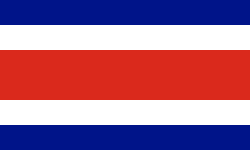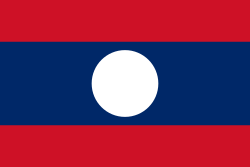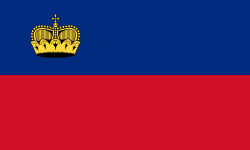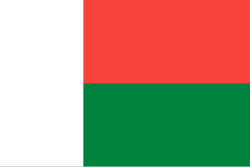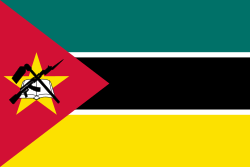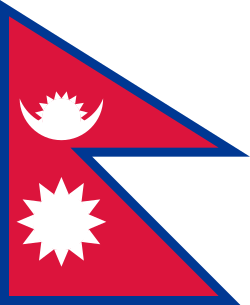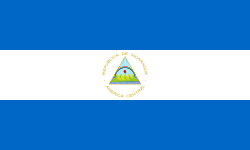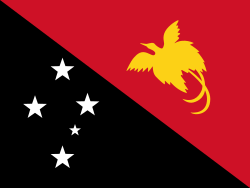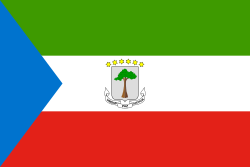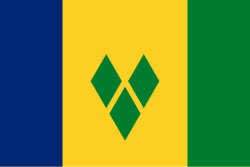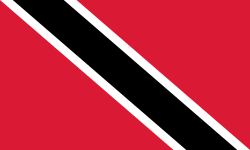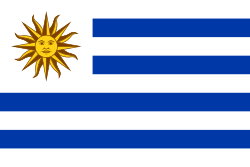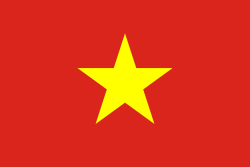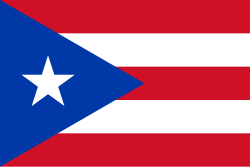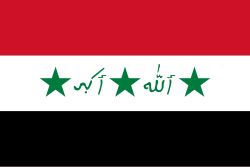Letní olympijské hry 1992
| XXV. letní olympijské hry | |
|---|---|
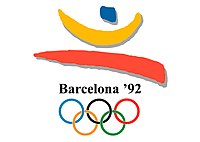 | |
| Místo konání | Barcelona, Katalánsko, Španělsko |
| Počet zemí | 169 |
| Počet sportovců | 9 956 |
| Soutěže | 286 |
| Zahájení | 25. červenec 1992 |
| Zakončení | 9. srpen 1992 |
| Slib za sportovce | Luis Doreste Blanco |
| Slib za rozhodčí | Eugeni Asensio |
| Pochodeň | Antonio Rebollo |
| Stadion | Estadi Olímpic Lluís Companys |
← LOH 1988 LOH 1996 → | |
XXV. letní olympijské hry se uskutečnily v době od 25. července až do 9. srpna 1992 v Barceloně, Katalánsko (Španělsko). Zúčastnilo se jich 9 956 sportovců (7 010 mužů a 2 851 žen) ze 169 zemí. Soutěžilo se v 286 disciplínách 32 sportů.
Pořadatelské město bylo vybráno v soutěži mezi Amsterodamem, Bělehradem, Birminghamem, Brisbane a Paříží v Lausanne ve Švýcarsku v roce 1986.
Nejlepší výkony her
Jedním z nejlepších výkonů v atletických soutěžích byl první čas pod 47 sekund v historii Kevina Curtise Younga v běhu na 400 metrů překážek. Má hodnotu 46,78 sekundy a jako světový rekord vydržel až do 1. července 2021, kdy ho překonal Nor Karsten Warholm časem 46,70 s.[1] Warholm připravil Younga také o olympijský rekord, když 3. srpna 2021 v Tokiu zaběhl čas 45,94 s.[2]
Sporty
Ukázkové sporty
- Hokej na kolečkových bruslích
- Pelota
- Taekwondo
Počet medailí podle údajů mezinárodního olympijského výboru
| Pořadí | Země | Zlato | Stříbro | Bronz | Celkem |
| 1 | 45 | 38 | 29 | 112 | |
| 2 | 37 | 34 | 37 | 108 | |
| 3 | 33 | 21 | 28 | 82 | |
| 4 | 16 | 22 | 16 | 54 | |
| 5 | 14 | 6 | 11 | 31 | |
| 6 | 13 | 7 | 2 | 22 | |
| 7 | 12 | 5 | 12 | 29 | |
| 8 | 11 | 12 | 7 | 30 | |
| 9 | 8 | 5 | 16 | 29 | |
| 10 | 7 | 9 | 11 | 27 | |
| 11 | 7 | 4 | 7 | 18 | |
| 12 | 6 | 5 | 8 | 19 | |
| 13 | 5 | 3 | 12 | 20 | |
| 14 | 4 | 6 | 8 | 18 | |
| 15 | 4 | 2 | 1 | 7 | |
| 16 | 4 | 0 | 5 | 9 | |
| 17 | 3 | 8 | 11 | 22 | |
| 18 | 3 | 7 | 6 | 16 | |
| 19 | 3 | 6 | 10 | 19 | |
| 20 | 2 | 6 | 7 | 15 | |
| 21 | 2 | 4 | 2 | 8 | |
| 22 | 2 | 4 | 1 | 7 | |
| 23 | 2 | 2 | 2 | 6 | |
| 24 | 2 | 2 | 1 | 5 | |
| 25 | 2 | 1 | 0 | 3 | |
| 26 | 2 | 0 | 0 | 2 | |
| 27 | 1 | 7 | 4 | 12 | |
| 28 | 1 | 4 | 5 | 10 | |
| 29 | 1 | 2 | 2 | 5 | |
| 30 | 1 | 1 | 4 | 6 | |
| 31 | 1 | 1 | 1 | 3 | |
| 32 | 1 | 1 | 0 | 2 | |
| 33 | 1 | 0 | 2 | 3 | |
| 34 | 1 | 0 | 1 | 2 | |
| 34 | 1 | 0 | 1 | 2 | |
| 34 | 1 | 0 | 1 | 2 | |
| 37 | 1 | 0 | 0 | 1 | |
| 38 | 0 | 3 | 1 | 4 | |
| 38 | 0 | 3 | 1 | 4 | |
| 40 | 0 | 2 | 1 | 3 | |
| 41 | 0 | 2 | 0 | 2 | |
| 41 | 0 | 2 | 0 | 2 | |
| 41 | 0 | 2 | 0 | 2 | |
| 44 | 0 | 1 | 2 | 3 | |
| 44 | 0 | 1 | 2 | 3 | |
| 44 | 0 | 1 | 2 | 3 | |
| 44 | 0 | 1 | 2 | 3 | |
| 48 | 0 | 1 | 1 | 2 | |
| 49 | 0 | 1 | 0 | 1 | |
| 49 | 0 | 1 | 0 | 1 | |
| 49 | 0 | 1 | 0 | 1 | |
| 52 | 0 | 0 | 2 | 2 | |
| 52 | 0 | 0 | 2 | 2 | |
| 54 | 0 | 0 | 1 | 1 | |
| 54 | 0 | 0 | 1 | 1 | |
| 54 | 0 | 0 | 1 | 1 | |
| 54 | 0 | 0 | 1 | 1 | |
| 54 | 0 | 0 | 1 | 1 | |
| 54 | 0 | 0 | 1 | 1 | |
| 54 | 0 | 0 | 1 | 1 | |
| 54 | 0 | 0 | 1 | 1 | |
| 54 | 0 | 0 | 1 | 1 | |
| 54 | 0 | 0 | 1 | 1 | |
| 54 | 0 | 0 | 1 | 1 | |
| Total | 260 | 257 | 298 | 815 | |
|---|---|---|---|---|---|
* Společenství nezávislých států – tým složený ze sportovců Ruska a 11 republik bývalého Sovětského svazu (Arménie, Ázerbájdžán, Bělorusko, Gruzie, Kazachstán, Kyrgyzstán, Moldávie, Tádžikistán, Turkmenistán, Ukrajina, Uzbekistán); pobaltské republiky (Estonsko, Litva, Lotyšsko) sestavily vlastní reprezentační týmy.
** Sportovci z bývalé Jugoslávie, kteří se her nemohli účastnit jako zástupci svých států, protože Svazová republika Jugoslávie byla postižena sankcemi OSN a v Makedonii doposud neexistoval olympijský výbor; jednotlivcům však byla účast dovolena.
Účastnické země
Her se zúčastnili sportovci z celkem 169 zemí (včetně Společenství nezávislých států). První účast v historii zaznamenaly tyto země: Bosna a Hercegovina, Chorvatsko, Slovinsko (všechny díky rozpadu Jugoslávie) a Namibie. Poprvé se zúčastnil také znovusjednocený tým Německa a Jemenu.
Čísla v závorkách udávají počty sportovců zastupujících zemi.
- Účastnické země
- Počet sportovců zastupujících jednotlivé země
|
|
|
Basketbalový turnaj - Dream Team
Jedním z význačných momentů této olympiády byla účast předních profesionálních basketbalistů v olympijském turnaji mužů - jednalo se především o reprezentaci USA - tzv. Dream Team.
Československo na LOH 1992
Odkazy
Reference
- ↑ Bitvy hvězd slibují nevídaná představení! Brutální časy, smeká český rekordman. Sport.cz [online]. 2021-07-02 [cit. 2021-10-17]. Dostupné online.
- ↑ Epochální jako Beamon. Warholm svému rekordu nemůže uvěřit. Seznam Zprávy [online]. Seznam.cz, 2021-08-03 [cit. 2021-10-17]. Dostupné online.
Externí odkazy
 Obrázky, zvuky či videa k tématu Letní olympijské hry 1992 na Wikimedia Commons
Obrázky, zvuky či videa k tématu Letní olympijské hry 1992 na Wikimedia Commons - www.olympic.cz
- (anglicky) Oficiální výsledky LOH 1992 na Olympedia[nedostupný zdroj]
Média použitá na této stránce
Olympijská vlajka
Flag of South Korea from 21 February 1984 to 15 October 1997, when the exact colors were specified into their shades.
Vlajka České republiky. Podoba státní vlajky České republiky je definována zákonem České národní rady č. 3/1993 Sb., o státních symbolech České republiky, přijatým 17. prosince 1992 a který nabyl účinnosti 1. ledna 1993, kdy rozdělením České a Slovenské Federativní republiky vznikla samostatná Česká republika. Vlajka je popsána v § 4 takto: „Státní vlajka České republiky se skládá z horního pruhu bílého a dolního pruhu červeného, mezi něž je vsunut žerďový modrý klín do poloviny délky vlajky. Poměr šířky k její délce je 2 : 3.“
Vlajka České republiky. Podoba státní vlajky České republiky je definována zákonem České národní rady č. 3/1993 Sb., o státních symbolech České republiky, přijatým 17. prosince 1992 a který nabyl účinnosti 1. ledna 1993, kdy rozdělením České a Slovenské Federativní republiky vznikla samostatná Česká republika. Vlajka je popsána v § 4 takto: „Státní vlajka České republiky se skládá z horního pruhu bílého a dolního pruhu červeného, mezi něž je vsunut žerďový modrý klín do poloviny délky vlajky. Poměr šířky k její délce je 2 : 3.“
Variant version of a flag of Japan, used between January 27, 1870 and August 13, 1999 (aspect ratio 7:10).
bendera Indonesia
Finská vlajka
Zelený pruh má znázorňovat většinové katolické obyvatelsto Irska, oranžový pruh reprezentuje protestantskou menšinu a bílý pruh uprostřed znázorňuje mír a harmonii mezi nimi.
Flag of Jamaica. “The sunshine, the land is green, and the people are strong and bold” is the symbolism of the colours of the flag. GOLD represents the natural wealth and beauty of sunlight; GREEN represents hope and agricultural resources; BLACK represents the strength and creativity of the people. The original symbolism, however, was "Hardships there are, but the land is green, and the sun shineth", where BLACK represented the hardships being faced.
Flag of Namibia
The civil ensign and flag of Belgium. It is identical to Image:Flag of Belgium.svg except that it has a 2:3 ratio, instead of 13:15.
Při zobrazení tohoto souboru lze snadno přidat orámování
Flag of Iran. The tricolor flag was introduced in 1906, but after the Islamic Revolution of 1979 the Arabic words 'Allahu akbar' ('God is great'), written in the Kufic script of the Qur'an and repeated 22 times, were added to the red and green strips where they border the white central strip and in the middle is the emblem of Iran (which is a stylized Persian alphabet of the Arabic word Allah ("God")).
The official ISIRI standard (translation at FotW) gives two slightly different methods of construction for the flag: a compass-and-straightedge construction used for File:Flag of Iran (official).svg, and a "simplified" construction sheet with rational numbers used for this file.
Chinese Taipei Olympic Flag. According to the official website of Chinese Taipei Olympic Committee, Blue Sky(circle) & White Sun(triangles) above the Olympic rings is neither the National Emblem of the Republic of China, nor the Party Emblem of Kuomintang (KMT), but a design in between, where the triangles do not extend to the edge of the blue circle, as registered at International Olympic Committee in 1981 and digitally rendered in 2013. Besides, the blue outline of the five-petaled plum blossom is broader than the red one. Moreover, the CMYK code of the blue one and the Blue Sky & White Sun is "C100-M100-Y0-K0", and different from the Olympic rings (C100-M25-Y0-K0). Note that it's the only version recognized by IOC.
The national flag of Kingdom of Thailand; there are total of 3 colours:
- Red represents the blood spilt to protect Thailand’s independence and often more simply described as representing the nation.
- White represents the religion of Buddhism, the predominant religion of the nation
- Blue represents the monarchy of the nation, which is recognised as the centre of Thai hearts.
Vlajka Angoly
The flag of Aruba
| Flag of Bolivia* | |
|---|---|
| country | Template:I18n/Republic of Bolivia |
| used by | Bolivia |
| from | 1851 |
| until | Present |
| created by | Government of Bolivia |
| format | 15:22 |
| shape | rectangular |
| colours | červená, žlutá, zelená
flag has 3 horizontal stripes |
| other characteristics | A horizontal tricolor of red, yellow and green. |
Flag of Burkina Faso
The flag of the Dominican Republic has a centered white cross that extends to the edges. This emblem is similar to the flag design and shows a bible, a cross of gold and 6 Dominican flags. There are branches of olive and palm around the shield and above on the ribbon is the motto "Dios,Patria!, Libertad" ("God, Country, Freedom") and to amiable freedom. The blue is said to stand for liberty, red for the fire and blood of the independence struggle and the white cross symbolized that God has not forgotten his people. "Republica Dominicana". The Dominican flag was designed by Juan Pablo Duarte, father of the national Independence of Dominican Republic. The first dominican flag was sewn by a young lady named Concepción Bona, who lived across the street of El Baluarte, monument where the patriots gathered to fight for the independence, the night of February 27th, 1844. Concepción Bona was helped by her first cousin María de Jesús Pina.
The flag of Guam, courtesy an e-mail from the author of xrmap. Modifications by Denelson83.
The national and official state flag of Haiti; arms obtained from File:Coat of arms of Haiti.svg. The civil flag can be found at here.
Při zobrazení tohoto souboru lze snadno přidat orámování
The Flag of Iceland.
- Horizontal aspect ratio: 7:1:2:1:14;
- Vertical aspect ratio: 7:1:2:1:7.
Flag of Laos
Flag of Liechtenstein
Flag of Maldives. The colours used are Pantone 186 C for red and Pantone 348 C for green.
Flag of the Ivory Coast, written by Jon Harald Søby, modified by Zscout370. The colors match to what is reported at http://fotw.vexillum.com/flags/ci.html.
Flag of Portugal, created by Columbano Bordalo Pinheiro (1857–1929), officially adopted by Portuguese government in June 30th 1911 (in use since about November 1910). Color shades matching the RGB values officially reccomended here. (PMS values should be used for direct ink or textile; CMYK for 4-color offset printing on paper; this is an image for screen display, RGB should be used.)
Flag of Rwanda. The flag ratio is 2:3 with the stripes being 2:1:1. Colors are the following officially: Pantone 299 C 2X (blue), RAL 6029 (green), RAL 1023 (yellow) and RAL 1003 (golden yellow). (As of 03/08/2010, the only color used is the Pantone 299 C, which is from here. The rest of the colors are RAL shades from here.)
Flag of Senegal
The proportions of this flag are 3:2; however, there is no official definition for the correct proportions and also 5:3 is widely used.
Flag of Syria. Originally flag of the Syria Revolution (from 2011), de facto flag of Syria beginning December 2024, official beginning March 2025.
Flag of Tunisia until 1999.
Flag of Tunisia until 1999.
(c) Zscout370 na projektu Wikipedie v jazyce angličtina, CC BY-SA 3.0
Replacement for en:Image:South African Olympic Flag.png.
Autor: Tento vektorový obrázek byl vytvořen programem Inkscape ., Licence: CC BY-SA 3.0
Flag of Ethiopia, used from 1987 to 1991
Made by author of Xramp, first uploaded by Denelson83 as Flag of Ecuador.svg, modifications by Husunqu.
Autor: Dufo, Licence: CC BY-SA 3.0
Olympische Sommerspiele 1992 — Anzahl der Athleten
Belize Flag before August 28, 2019 Standardzations SVG from 3 September 2019 revision by FDRMRZUSA
Flag of Zambia before 1996
Flag of the Ivory Coast, written by Jon Harald Søby, modified by Zscout370. The colors match to what is reported at http://fotw.vexillum.com/flags/ci.html.
Flag of Lesotho 1987-2006
This is the flag of Bahrain used from 5 October 1950 until 14 February 2002. The base image is from the 2002 CIA World Factbook (mirrored at UMSL). I have removed the border and recolored the red section according to Image:Flag of Bahrain.svg.
Autor: Josep Maria Trias, Licence: CC BY-SA 4.0
Este es el emblema que se uso oficialmente para los juegos de la XXV olimpiada Barcelona 1992
State Flag of Venezuela 1930-2006, New flag was introduced 9 March 2006.
Former version of the flag of Paraguay
Former Iraqi flag, used from 1991 to 2004.
This is the flag of the Cayman Islands, prior to 1999 (It seems this version is still in use). The base pattern is from HK Blue Ensign and the arms are from the blue ensign. The FOTW was used for the position of the arms.
The three stars mean Grand Cayman(76miles), Cayman Brac(14miles), and Little Cayman(10miles).The flag of San Marino, before the 2011 standardization
Flag of Oman from 1970 to 1995
1910 Flag of Bermuda (with smaller coat of arms)

